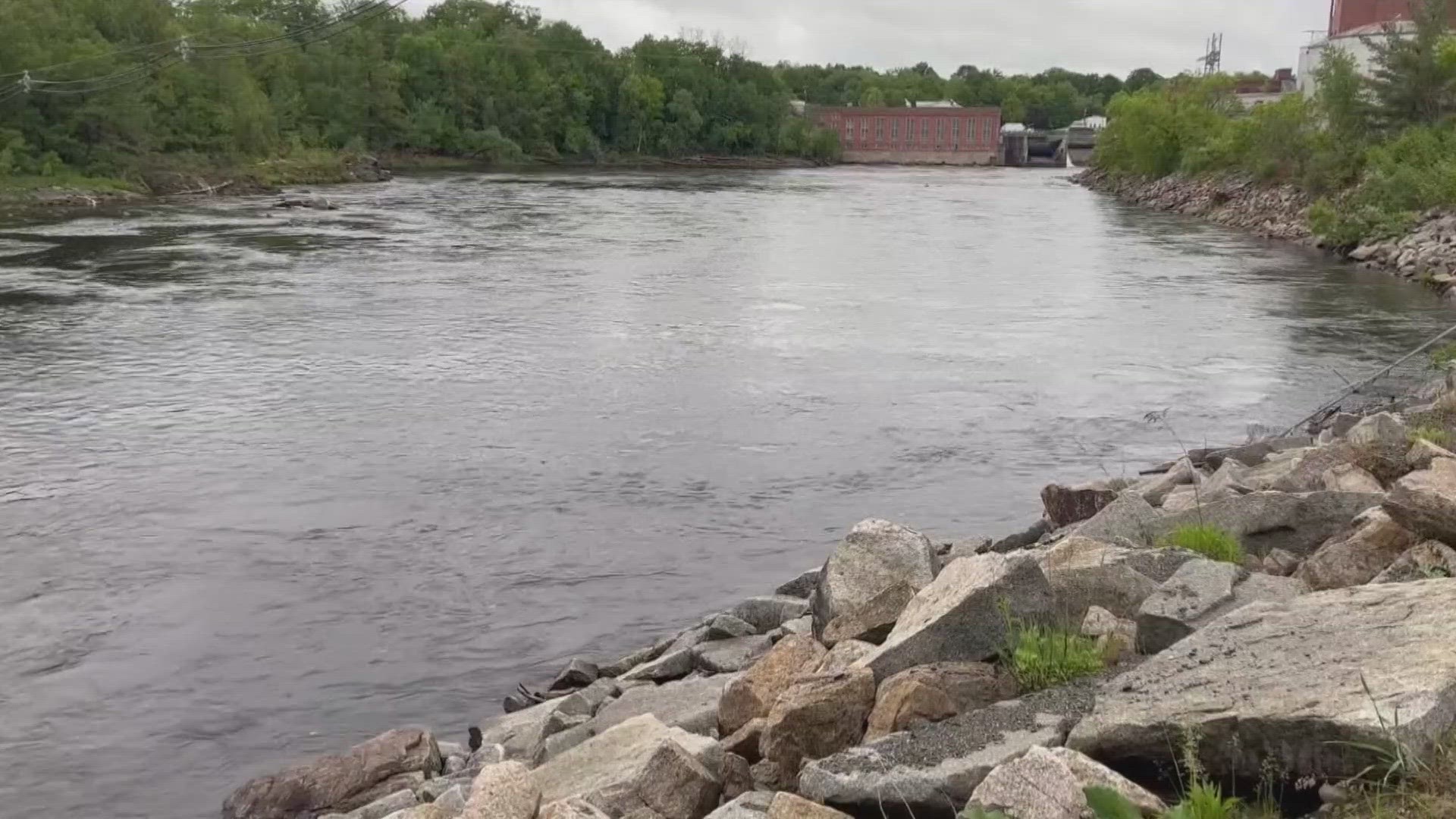MADISON, Maine — It's an ambitious goal — finding a way to remove toxic industrial chemicals, known as PFAS from Maine's rivers.
The chemicals, used to make an array of household and industrial products, have been linked to serious health problems including cancer and kidney issues. And flushing those chemicals out is the intent behind a multi-million dollar wastewater treatment project being tested right now in Somerset County.
A system to remove and destroy PFAS, which takes decades to break down in the body and the environment, is being pioneered at the Anson-Madison Sanitary District.
The facility treats waste from Anson and Madison, one of many plants that discharge treated waste into the Kennebec River, a primary source of drinking water. There are no systems in Maine that have the capacity to remove these dangerous compounds.
"The district wanted to figure out and learn more about how can we treat these compounds and prevent them from getting into the state's water bodies," Steve Woodard, the chief innovation officer with Emerging Compounds Treatment Technologies or ECT2, explained.
The district is teaming up with the Portland-based company and Dirigo Engineering to develop a centralized treatment system to remove PFAS. The project — utilizing millions of dollars in state and federal funding — is in the first phase. So far, the removal system is using different ways to draw PFAS out of the wastewater, including adding turbulence and air, similar to a blender.
"They will foam, and you can skim that foam off the top. And you are removing a good chunk of the PFAS," Woodard added.
The system also uses ion exchange resins, which are tiny plastic beads that contain special properties that remove PFAS. Contaminated water flows through vessels filled with millions of beads, and the compounds latch onto them.
Since 2018, ECT2's patented resin system at the former Pease Air Force Base in Portsmouth, New Hampshire has treated tens of millions of gallons of contaminated water. Decades of exercises at the base, using firefighting foam-tainted drinking water, impacted wells, and nearby land.
The system regenerates a solution that releases the chemicals from the bead, so a million gallons of contaminated wastewater results in only a gallon of waste.
Another important part of the project is figuring out what technologies will best destroy the chemicals and won't be sent back to the landfill. Those technologies are still under development.
The first-of-a-kind system could ultimately take in leachate from Maine landfills and septage, resulting in PFAS levels below the current drinking water standards before being discharged into the Kennebec River.
"This facility was designed for five million gallons a day. We are operating at 10 percent capacity right now, so we have that additional capacity to help other communities," Dale Clark, the Anson-Madison Sanitary District superintendent, said.
Scaling up the system by next year is expected to cost nearly $60 million. But these partners are committed to seeing the project completed.
"We will continue to work towards funding phases 2 and 3, which will allow us to improve the treatment level, improve the ability to treat more waste and provide a benefit for the whole state of Maine," Jim Lord, a senior engineering project manager at Dirigo Engineering said.
It's all in an effort to address the toll on Maine waterways and public health.

